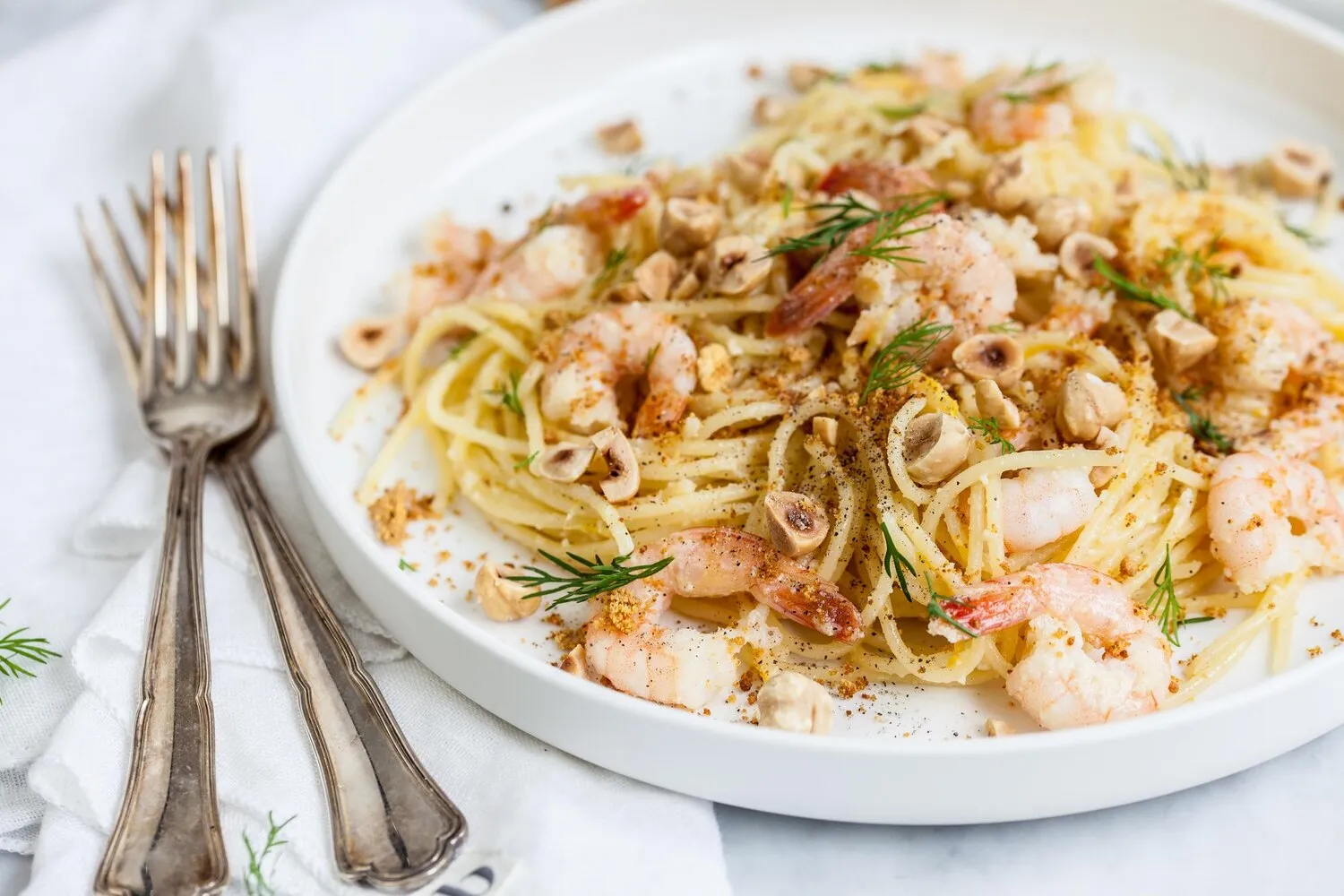
Pasta with Seafood
A classic Italian dish featuring pasta served with a variety of fresh seafood.
Nutrition Facts
* The % Daily Value (DV) tells you how much a nutrient in a serving of food contributes to a daily diet. 2,000 calories a day is used for general nutrition advice.
Pasta with seafood has roots in the coastal regions of Italy, where fresh catches were readily available. The dish likely evolved from simple preparations of pasta tossed with available shellfish and fish, gradually becoming more refined as Italian cuisine developed.
Pasta with seafood is deeply ingrained in Italian coastal culture, often representing a celebratory meal or a special occasion reflecting the abundance of the sea.
Regional Variations
Different coastal regions have their own unique variations. For example, in Venice, you might find 'Spaghetti alle Vongole' (spaghetti with clams), while in Sicily, swordfish might be a prominent ingredient.
Family Gatherings
It is common to serve large platters of pasta with seafood during family gatherings and holidays, fostering a sense of community and shared enjoyment.
Freshness is Key
The emphasis on using the freshest possible seafood highlights the importance of local ingredients and sustainable fishing practices in Italian coastal cuisine.
The primary flavors are a harmonious blend of the sea's brininess, the richness of olive oil, the acidity of tomatoes or white wine, and the subtle aromatics of garlic and herbs.
The specific flavor profile depends greatly on the seafood used. Mussels and clams contribute a salty, oceanic taste, while shrimp and scallops offer a sweeter, more delicate flavor. Garlic, parsley, and chili flakes (optional) provide aromatic and spicy notes. A base of olive oil and either tomato sauce (often light and fresh) or white wine sauce (with lemon) ties everything together.
Seafood Quality
Always use the freshest seafood available. Discard any shellfish that don't open after cooking.
Pasta Choice
Long pasta shapes like spaghetti, linguine, or fettuccine work well with seafood sauces, allowing the sauce to cling to the pasta effectively.
Don't Overcook the Seafood
Seafood cooks quickly, so add it towards the end of the cooking process to prevent it from becoming rubbery. Usually, a few minutes are all that's needed to cook most seafood through.
Pasta Water
Reserve some pasta water before draining the pasta. The starchy water helps to emulsify the sauce and create a creamy consistency.
Explore additional Italian dishes and restaurants
Explore ItalianDiscover top dining spots and culinary experiences in Trieste.
Explore TriesteLearn more about the food culture, restaurant scene, and culinary heritage of Italy.
Explore Italy
